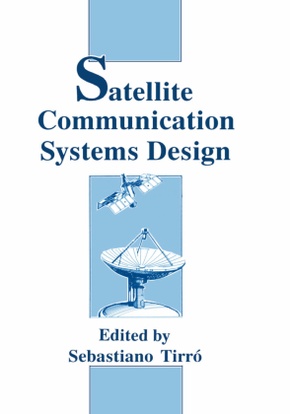
Satellite Communication Systems Design, 2 Teile
| Verlag | Springer |
| Auflage | 1993 |
| Seiten | 837 |
| Format | 25,4 cm |
| Gewicht | 1884 g |
| Artikeltyp | Englisches Buch |
| EAN | 9780306441479 |
| Bestell-Nr | 30644147EA |
Writing a comprehensive book on satellite communications requires the com mand of many technical disciplines and the availability of up-to-date information on international recommendations, system architectures, and equipment stand ards. It is therefore necessary to involve many authors, each possessing a good level of knowledge in a particular discipline. The problem of using a coherent and unambiguous set of definitions and basic terms has been solved by including in the book all the background information needed for understanding satellite communication systems, without any major reference to other textbooks specializing in particular disciplines. The obvious consequence of this approach has been the large size of the book, with the advantages, however, of practically complete independence from other books, more systematic discussion of the subject matter, and better readability. After the required background information, emphasis has been placed on the discussion of techniques and system design criteria rather than on specific equipment implementation or description of particular systems. The book may be divided in five parts as follows: - The first five chapters provide most of the required background information. - Chapter 6 is an introductory outline of satellite communication systems. - Chapters 7 to 13 deal with the various aspects of technical system design. - Chapter 14 discusses system economics. - Chapter 15 provides a brief insight into some foreseeable future develop ments of satellite communications.
Inhaltsverzeichnis:
1. Signals.- 2. Causes of Signal Impairment.- 3. Baseband Signal Processing.- 4. Services.- 5. Quality of Service.- 6. System Outline.- 7. Orbits and Controlled Trajectories.- 8. Radio-Frequency Design Issues.- 9. Analog Transmission.- 10. Digital Transmission.- 11. Bidirectional Circuit Design.- 12. Channel-Access Schemes.- 13. Networking.- 14. System Economics.- 15. Future Developments.- Appendix 1. Radio Regulations Provisions.- I. Introduction.- II. Frequency Allocations.- III. Interference Coordination.- A. Modes of Interference between Space and Terrestrial Services.- B. Modes of Interference between Stations of Different Space Systems in Frequency Bands with Separated Earth-to-Space and Space-to-Earth Allocations.- C. Modes of Interference between ESs of Different Space Systems in Frequency Bands for Bidirectional Use.- IV. Radiation Limitations.- References.- Appendix 2. Frequency Sharing among Fixed-Satellite Service Networks.- I. Interference Evaluation to Determine if C oordination is Required.- II. Detailed Coordination Calculations and Interference Criteria.- III. Possible Methods to Solve Incompatibilities.- A. Increase in Angular Separation.- B. Adjustment of Network Parameters.- C. Frequency Separation (Staggering).- D. Departure from CCIR Recommendations.- References.- Appendix 3. Frequency Sharing between the Fixed-Satellite Service and the Fixed Service.- I. Determination of the Coordination Area.- II. Detailed Coordination Calculations and Interference Criteria.- III. Possible Methods to Solve Incompatibilities.- A. Frequency Separation.- B. Adjustment of Network Parameters.- C. Other Methods.- References.- Appendix 4. Efficient Use of the Geostationary Orbit-Spectrum Resource.- I. Overcrowding in the Geostationary Orbit.- II. Communication Capacity of the Geostationary Orbit.- A. Method A (Pessimistic).- B. Method B (Optimistic).- C. CCIR Methods.- III. Major Factors Affecting the Efficiency of Geostationary Orbit-Spectrum Utilization.- A. Frequency Reuse Potential.- B. Spacecraft Antenna Radiation Characteristics.- C. Earth Station Antenna Radiation Characteristics.- D. Stationkeeping.- E. Interference Allowance.- F. Optimization of Frequency Assignments and Modulation Characteristics.- IV. Outline of the Main Results of WARC-ORB '85-'88.- References.- Appendix 5. Authors of Individual Sections.- Appendix 6. List of Acronyms.
